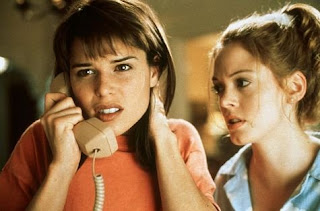During our latest Character, we were given different rooms around the house, then we were to anthropomorphize the furniture that would often be found in that particular room and create a villain from one of them.
The cardboard box is often used to simply store unwanted or unused things in the attic. Therefore, the box may feel useless and depressed.
A broken alarm clock, thought of as useless, could be a jittery, mad scientist type to go along with its 'time' and 'mechanical/science' aspect. I based the design around Albert Einstein, using broken springs as wild, wacky hair.
An old mirror would definitely be the vain type and thus would need to be very ornamental and show-off a lot. Justin suggested that it could also look at itself in the mirrored doors that it has on its sides.
An old, leather chair would, I thought, be sick of being sat on its whole life and end up bitter and grumpy. This kind of personality would also suit its elderly appearance, constantly complaining about anyone and anything.
I also came up with a melodramatic candle who is constantly lamenting his extinguished flame ever since being moved up into the attic. Candles are often seen as theatrical and can add a certain dramatic atmosphere to any place.
Finally, the grandfather clock was made the villain due to their normally tall and imposing appearance. They can easily dominate any room they're settled in, in an almost ominous way.
Soon after, we did the same thing with our own interesting objects. I chose my headphones because they were bulky, large and had plenty of interesting textures like chrome, leather and rubber.
My gaming headphones are depicted here as being very snarky and mocking. This plays on the stereotype that gamers are a group of trash-talking, teasing, blunt people who love nothing more than to berate others (this is, of course, not true. The security of anonymity causes that behavior of these types of gamers).
Having a little more fun, I decided to create its polar opposite as a sort of 'protagonist'. Being an audio device, it needed to be something old-fashioned and used for sound, so naturally I went with a gramophone. The pin levers for playing the vynl disk would make perfect arms while a little extra detail in the form of volume dials made excellent spectacles to further enhance the old-fashioned personality of the character.
_________________________________________________________________________________
Moving on, I began work on my villain, experimenting with proportions, though Justin still preferred the big, bulky form. I also had the idea that, since these characters would live in a future city, it would make sense for this futuristic technology to affect the Fat Cat villain somehow.
Remembering what Justin told me about making everything bigger and more extravagant when it comes to the superhero genre, and remembering that I wanted Fat Cat to be in control of the city somehow through shady, political means, I would plug him straight into the city as a kind of omnipresent, ominous overlord.
This would also take in some real life issues that many are aware of such as governments taking more and more control of our lives through surveillance and the invasion of privacy. It also makes this villain more frightening since he could hunt down anyone at any time from anywhere in the city through proxy via the authorities or from mass, corrupted media all without leaving his hideout.
With the main villain's basic idea and concept done, I thought I would also begin work on the new henchman. In the futuristic age these characters are set in, I wanted the henchman to reflect both that and its master, hence why I redesigned this henchman into a small, hovering probe. The probe would have a mind of its own and its function would be to be its master's emisarry in the city, a messenger or an envoy sent out into the city to represent its master.
I also got to work on fiddling with the proportions of my Heroine while still attempting to keep those 'hero' traits that make up the figure of a protagonist.




















































